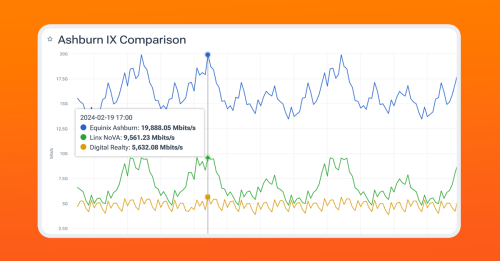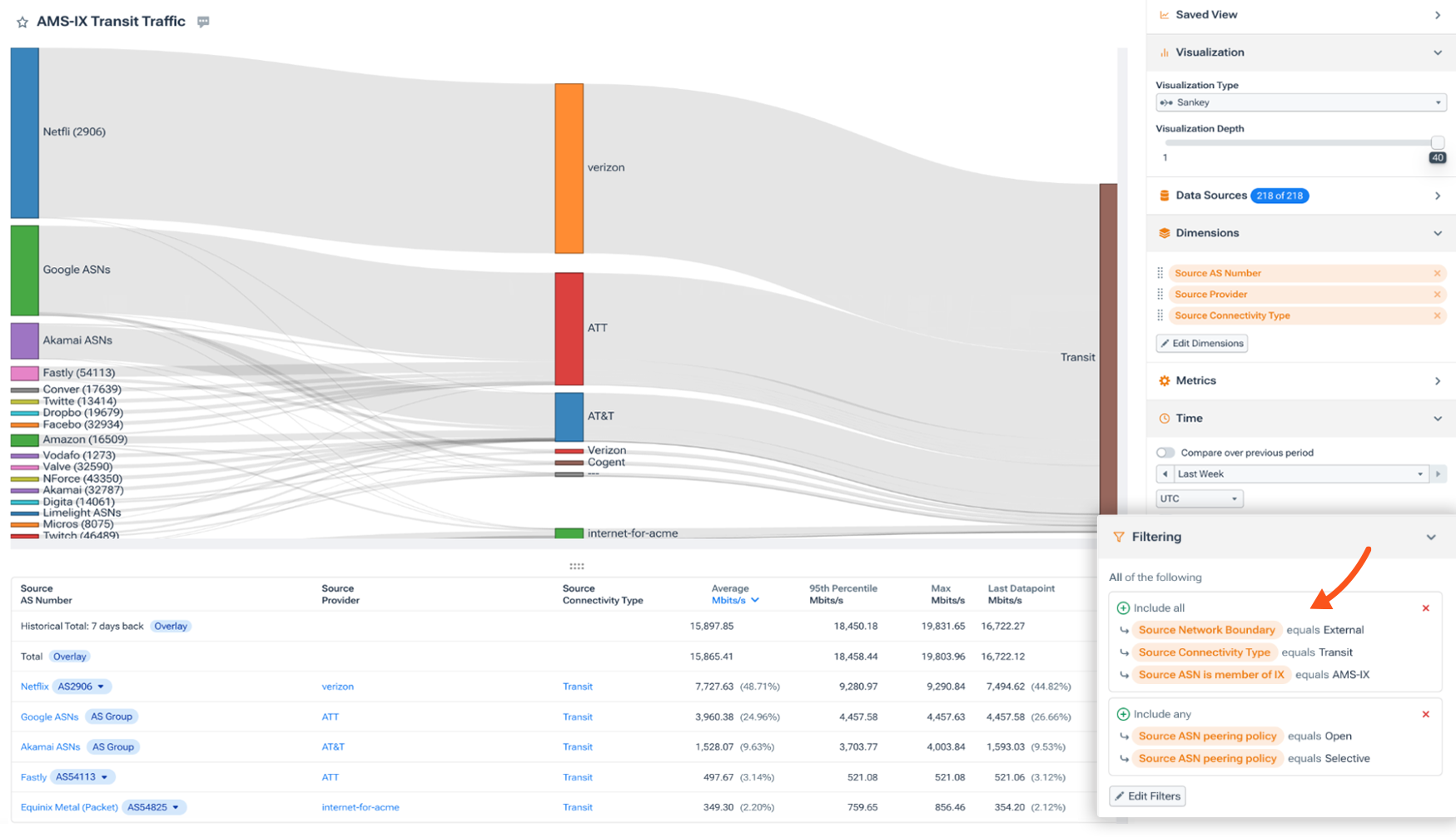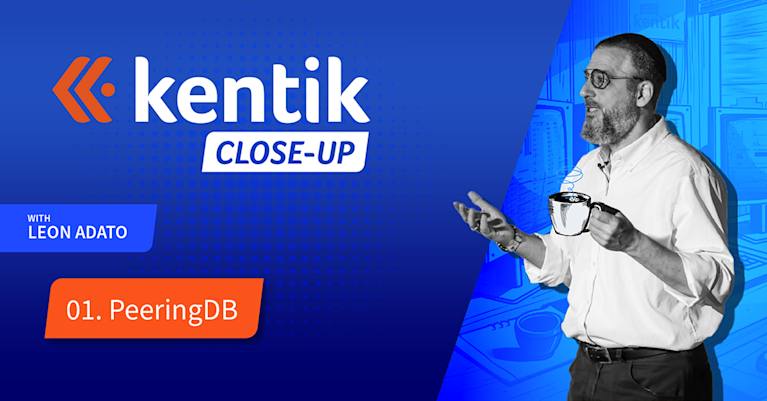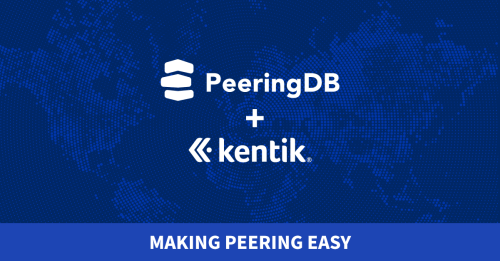Closing the Interconnection Data Gap: Integrating PeeringDB into Kentik Data Explorer


Summary
Kentik users can now correlate their traffic data with internet exchanges (IXes) and data centers worldwide, even ones they are not a member of – giving them instant answers for better informed peering decisions and interconnection strategies that reduce costs and improve performance.
Less than a year ago, Kentik became the first network observability platform to integrate PeeringDB – delivering better database usability, visibility into common footprint and traffic ratios between customer networks and other ASNs, and more.
Building on this milestone, we’ve taken our integration a step further by integrating PeeringDB data into Kentik Data Explorer. This means Kentik customers can now use a set of PeeringDB-sourced filters to quickly and easily evaluate traffic between their network and networks that are members of an internet exchange (IX) or present at a data center, making data-driven peering decisions and interconnection analysis truly faster than ever before.

The problem
Peering managers, network planners, and edge strategy experts are always looking for ways to improve network performance, increase reliability, and reduce connectivity costs.
But getting the data to support strategic decisions like peering partnerships is a monumental task fraught with tedious data gathering and inefficient processes that drain time, energy, and, at times, sanity. Spending valuable resources collecting data to support strategic decisions, only to track all of it in a spreadsheet, is an exercise in futility that many of us would not like to revisit.
Let’s take a look at a seemingly simple scenario – figuring out whether it makes sense for a network to join an IX. How do you get an estimate of the volume of traffic the network can offload to peers on the exchange? This multi-step process consists of:
- Going through the list of exchange members
- Determining the traffic exchanged with each
- Checking their peering policy
- Guessing whether a session to an existing peer will move traffic around
- Making a guess of how much traffic would be moved from your paid connections.
Without Kentik, this is painful and time-consuming, sometimes requiring peering teams to meet with engineering to manually correlate PeeringDB records with their own flow data set or use a homegrown script to help with said correlation.
And this gets to the heart of today’s peering operations woes: analytical decisions are gated by an inordinate amount of difficulty in collecting and correlating data sets together. A lot of time is spent on spreadsheet manipulation, or the decisions are ultimately made based on hunches or arcane culture.
Advanced edge optimization strategies for network engineers, planners, and peering pros

Closing the interconnection data gap
At Kentik, we’re making peering simpler and more intuitive by eliminating this gap between the peering community and the contextualized data they need to do their jobs efficiently. Our latest feature release is a meaningful and significant step in this direction – finally, peering coordinators can get instant answers to the questions that matter most.
Let’s take that same IX scenario, but this time with Kentik. Figuring out whether it’s worth joining an IX is as simple as running a query (or two) in our platform using the newly available PeeringDB filters. In a matter of seconds, users can ask Kentik to: Show me my top Source ASNs where said ASNs are registered in this specific IX, with an open peering policy.

Hours of data gathering and correlation, reduced down to minutes with Kentik. Users can easily calculate the cost differential between the price of the port at that IX versus how much savings they would receive moving the transit traffic results to peering, which Kentik’s Connectivity Costs workflow can assist with.
PeeringDB filters in action
Screenshots are great, but let’s see this short product demo where we walk through this use case in the Kentik platform:
The possibilities don’t stop there. With these new filters, Kentik users can query on both IXes and data centers, enabling them to:
- Maximize the use of current IX ports and reduce transit costs by reclaiming transit traffic and converting it to IX peering traffic.
- Increase network resiliency by identifying additional peering locations where you can meet your existing peers.
- Find the internet exchanges and data centers where most of your traffic’s source and destination ASNs have a presence.
- Evaluate which IX to deploy to next based on your traffic profile and how much assured traffic you can peer off, and estimate the port capacity you will need.

With this latest update, network operators now have the crucial data and actionable insights needed to drastically streamline peering operations and create true data-backed cases to drive interconnection strategy.
Onboarding
As the cherry on top, we also rolled out auto-classification capabilities that automatically maps customer IX interfaces to PeeringDB IXes and facilities during the Kentik onboarding process, reducing tedious and repetitive onboarding tasks. Win-win.
The long game
These updates are incredibly exciting, and even more significant developments are on the horizon as we continue to explore the powerful combination of flow traffic analytics, PeeringDB records, our connectivity costs workflow, and AI. For example, what if Kentik ran a report on all of your top Source or Destination ASNs every day and made informed, analytical auto-suggestions about which IXes or data centers you should go next? Keep your eyes peeled, because this is where we are headed.
Get started
Sign up for a demo or join us at Peering Days in Poland from March 5-7, where our own Nina Bargisen will be speaking about how peering coordinators can use these multiple data sources to boost efficiency and streamline operations. If you’re already a Kentik customer, reach out to your customer success team to learn more.


